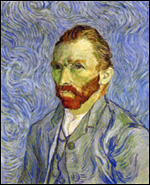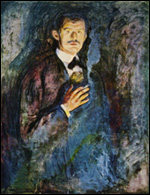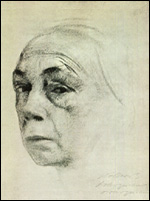
Afterword: Being-an-Artist
Though she never spoke in such terms, I suspect that what helped sustain her during the Seventies and Eighties was her consciousness of other minds in the older art that she admired. And that when she went into her studio and closed the door behind her, it was those that were present, in however shadowy and unverbalized form, and not this or that power-player in the so-called real, which is to say contemporary, Canadian art world.
In a long interview with Ian Lumsden in 1986, while they were preparing the show Drawings by Carol Fraser 1948-86, she said:
I know it’s crazy to say that a little girl that grows up in the Midwest has anything in common with Van Gogh, but I really felt like I understood something about his psyche, because I grew up in a Protestant parsonage, it was very bleak, and… it was just a kind of atmosphere, I suppose, but I really felt that I had understood.
Here she is, at greater length, in an interview in 1985 with the photographer and lawyer Cheryl Lean.:
Q. Did you ever hear this business of “lady painters” when you were studying back then?
A. Not really. I think that’s very English and maybe European, or something, and maybe that’s why you have it in Canada.
No, I didn’t. I think I got in on a good time. I never felt at all put down becausee I was a woman. In fact by the time I was through with graduate school I had a really good reputation in the Midwest, and it had been made by men. I mean, my teachers all had pushed me and supported me, and most of the art history profs.
And my art history classes were the thing that taught me the most about art, more than my studio classes.
And, oh, it was a time when in the Fifties there were a lot of women painters in the New York school that were coming along.
There was Frankenthaler, Jane Wilson, and, I can’t remember them all, there were well-known young women painters coming along and I think that the ground was broken by this time, that women could be serious, and of course we had Georgia O’Keefe in the background all the time.
Q. Now, is Georgia O’Keefe one of your favourites?
A. No, not really, she’s too heavy on design, I mean I like her but I think she’s rather cold and the human element doesn’t get into her work enough for me.
Q. Who are your models? In art school, who did you think you’d like to paint as well as?
A. Oh, all the hard ones (laughter).
No, I really was obviously very very dependent on the European expressionists—Munch, Van Gogh, Soutine—very heavy on Soutine. And that connected up with the Abstract Expressionists because they also were heavy on Soutine, they really liked him and took him very seriously.
And I liked Rouault a lot, too, because he connected up with my theological background in content, and also the lives or some of these painters I felt were really important to me.
Q. How are they important to you?
A. Oh, Rouault, for instance. He was a very devout man of incredible integrity. He just didn’t give a damn about what the world thought of him and of his art if it didn’t agree with what he thought of it.
I mean, he wasn’t opposed to success or anything, but he kept his own private life and he had a very very solitary and devoted kind of existence. His was the kind of devotional activity of painting and spiritual life all wrapped up in one, and that, I thought, was a good thing.
Soutine had a horrible life, I didn’t want to have anything to do with that (laughter).
Q. Is that something that you’ve tried to do in your own painting?
A. No, it’s just nice to have role models of people who have not been made cynical, not sold out, really done their own thing, have not been victimized too much by the commercial world, and yet on the other hand not destroyed themselves by being too opposed to any kind of success.
The appended self-portraits are ones that I know she was familiar with, and I suspect they spoke to her with a special immediacy.





